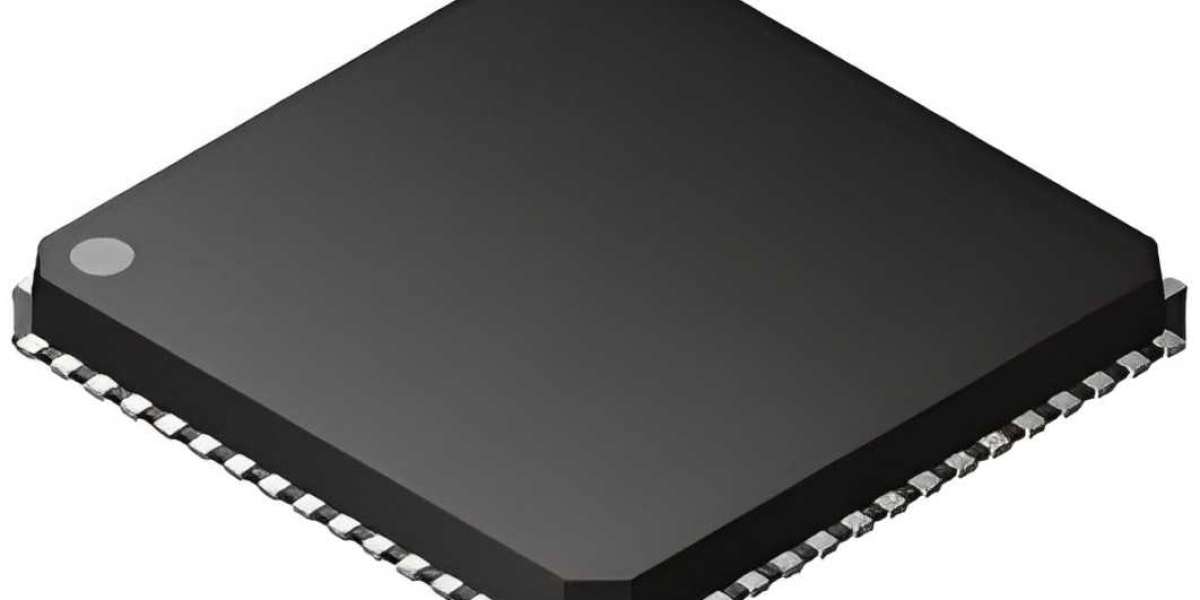Digital Signal Processors (DSPs) are an essential component in modern electronics, driving innovations across various industries such as telecommunications, audio processing, and even healthcare. As technology continues to advance, DSPs are at the forefront of enhancing the performance of devices, improving signal quality, and enabling real-time data processing. In this blog, we will explore what DSPs are, how they work, and why they are becoming an indispensable part of modern digital systems.
What Is a Digital Signal Processor (DSP)?
A Digital Signal Processor (DSP) is a specialized microprocessor designed to handle complex mathematical operations on digital signals in real time. Unlike general-purpose processors (like CPUs), DSPs are optimized for the repetitive tasks involved in signal processing, such as filtering, transforming, and compressing signals. DSPs process signals such as sound, video, temperature data, or any other signal represented in a digital form.
Key Features of Digital Signal Processors
High Performance: DSPs are engineered to perform intensive calculations quickly and efficiently. They feature specialized instruction sets that accelerate operations such as multiplication and addition, commonly used in signal processing.
Real-Time Processing: DSPs are designed to process data in real-time, ensuring that the output is generated without significant delay, which is essential for applications like audio and video processing, communications, and control systems.
Low Power Consumption: DSPs are optimized for low power consumption, which makes them ideal for battery-powered devices like smartphones, wearables, and IoT devices.
Parallel Processing Capabilities: Many DSPs feature multiple cores or parallel processing units, enabling them to handle large volumes of data simultaneously, which speeds up tasks like filtering, encoding, and decoding.
How Do Digital Signal Processors Work?
At its core, a DSP works by converting an analog signal into a digital one, performing mathematical operations on that signal, and then converting it back into an analog form if needed. The process typically involves the following stages:
Sampling: The analog signal is sampled at discrete intervals and converted into a digital signal using an Analog-to-Digital Converter (ADC).
Signal Processing: The digital signal undergoes a series of mathematical operations such as filtering, amplification, modulation, or other transformations that enhance or extract useful information from the signal.
Reconstruction: In some applications, the processed signal is converted back into an analog form using a Digital-to-Analog Converter (DAC).
This efficient process enables DSPs to handle tasks like audio equalization, noise reduction, compression, and even complex tasks like speech recognition and real-time video processing.
Applications of Digital Signal Processors
Digital Signal Processors play a pivotal role in a wide range of industries. Here are some of the most common applications:
Telecommunications: In mobile phones, VoIP systems, and satellite communication, DSPs are used to manage signals, reduce noise, and improve the clarity of voice and video calls. They also help with modulation and error correction during transmission.
Audio and Speech Processing: DSPs are critical in devices like soundbars, hearing aids, and voice assistants (e.g., Siri, Alexa). They help process and enhance audio signals, remove background noise, and perform tasks like voice recognition and real-time sound adjustments.
Image and Video Processing: In modern cameras, video conferencing systems, and even medical imaging devices, DSPs perform complex tasks such as image enhancement, compression, and real-time video streaming.
Control Systems: DSPs are used in various control systems like robotics, automotive systems (e.g., adaptive cruise control), and industrial automation to process sensor data and make real-time decisions.
Healthcare: In medical devices such as ECG monitors, ultrasound machines, and MRI scanners, DSPs are responsible for processing signals from sensors to produce accurate readings that doctors rely on for diagnosis.
Why Are Digital Signal Processors Important?
As the demand for faster, more efficient processing increases, the role of DSPs becomes more critical. Here's why:
Speed and Efficiency: DSPs perform operations much faster than general-purpose processors due to their specialized design. This means they can process large amounts of data in real-time, which is essential for time-sensitive applications like streaming, gaming, and communication systems.
Optimized for Specific Tasks: Unlike CPUs, which are designed for general-purpose computing tasks, DSPs are optimized for the repetitive operations that occur in signal processing, leading to higher efficiency and performance in these areas.
Cost-Effective: As technology advances, DSPs are becoming more affordable, making them a viable solution for consumer electronics, IoT devices, and even automotive applications. This cost-effectiveness allows manufacturers to integrate DSPs into a wide variety of products.
Power Efficiency: In mobile and embedded devices, power consumption is a key concern. DSPs are designed to consume less power while still offering high performance, making them ideal for battery-powered devices.
How Are Digital Signal Processors Different from Other Processors?
While DSPs, CPUs, and GPUs may seem similar, they have distinct differences that make each suited to specific types of tasks:
CPU (Central Processing Unit): The CPU is a general-purpose processor that handles a wide range of tasks. It is optimized for tasks requiring high single-threaded performance but is not as efficient for repetitive tasks like signal processing.
GPU (Graphics Processing Unit): The GPU is designed for parallel processing and is excellent for tasks that require handling large amounts of data in parallel, such as rendering graphics. While GPUs can be used for signal processing, they are not as specialized as DSPs.
DSP: The DSP is highly specialized for tasks like filtering, data compression, and real-time signal processing. It is optimized for speed and power efficiency, making it the ideal choice for applications that require quick and efficient signal manipulation.
The Future of Digital Signal Processors
With the rapid advancements in AI, IoT, and 5G technologies, the role of Digital Signal Processors is set to expand further. DSPs are increasingly being integrated into AI and machine learning applications to accelerate data processing tasks. In the future, DSPs will likely play a central role in enabling faster, more efficient real-time processing in everything from autonomous vehicles to advanced healthcare systems.
Conclusion
Digital Signal Processors are at the heart of the digital revolution, transforming the way we interact with technology. Their ability to process signals in real-time, with low power consumption and high performance, makes them indispensable in a wide variety of applications. As we continue to push the boundaries of what’s possible in technologyDSPs will remain a driving force behind innovation, enabling faster, smarter, and more efficient systems across industries.
By understanding how DSPs work and their numerous benefits, it's clear that they are not just an important part of today’s tech ecosystem but are also paving the way for the technologies of tomorrow. Whether you’re working on audio systems, medical devices, or advanced communications, Digital Signal Processors are the unsung heroes that make it all possible.



